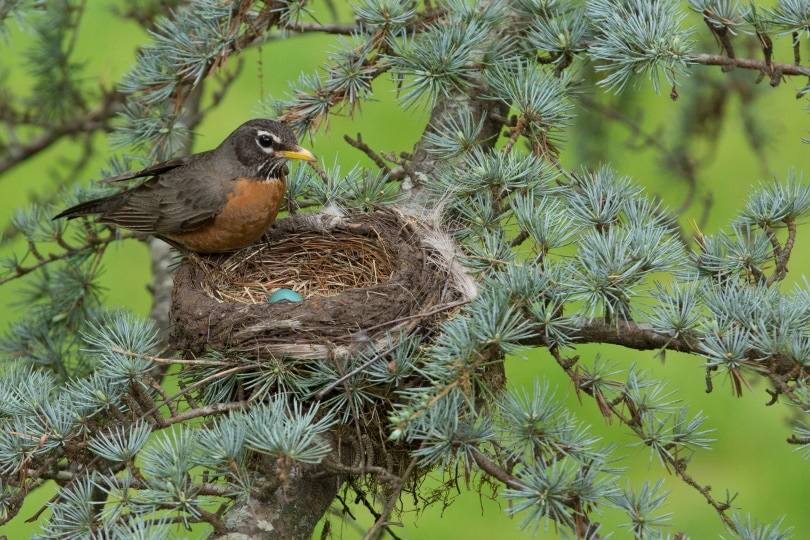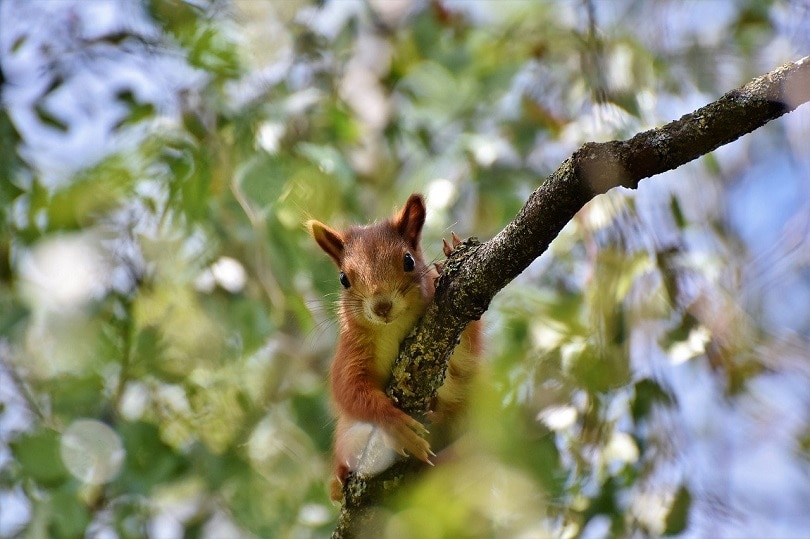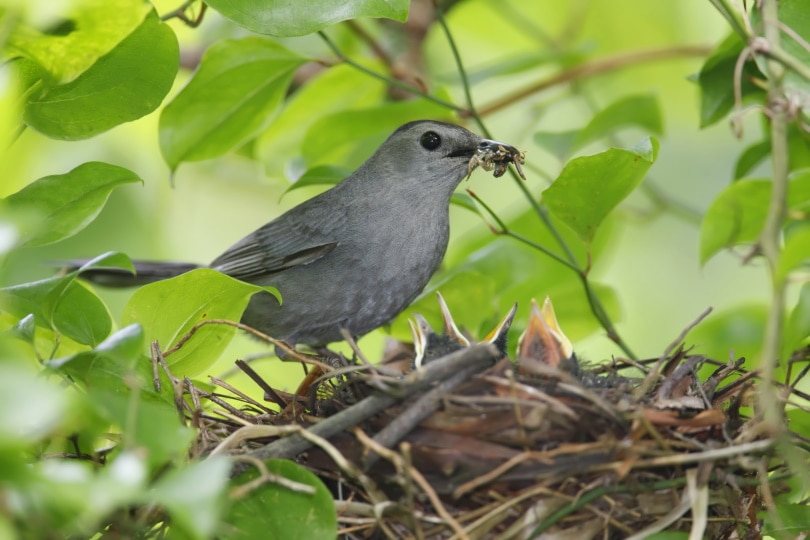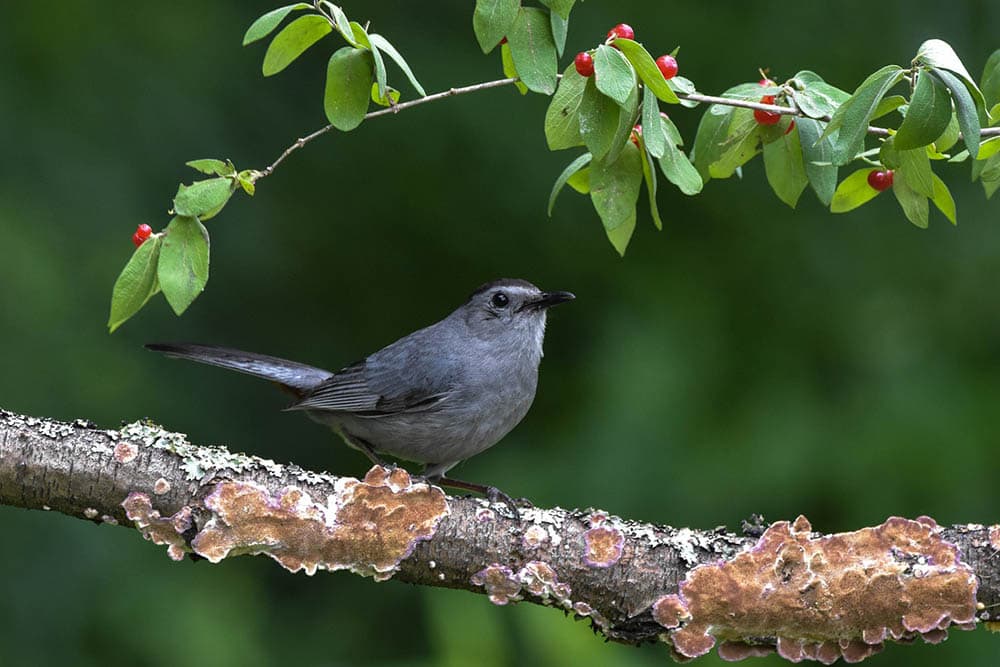Do All Birds Lay Eggs? How Do Birds Grow Up?
Last Updated on

Birds outnumber every animal on the planet, and there are 10,000 species scattered around the globe. The behaviors, migratory patterns, and communication techniques of birds have been studied for centuries, but researchers and ornithologists continue to learn new facts about the fascinating lives of birds. Although birds’ incubation and nestling periods vary depending on the species, all birds lay eggs, and every egg has a protective shell that must be incubated by one or more of the parents before hatching. The journey from being an egg to an adult is a perilous one, and we’ll discuss the life cycle of the gray catbird to demonstrate the complexity and dangers involved in the process.

The Life Cycle of the Gray Catbird
Gray catbirds are not as colorful as some of their competitors, but they’re unique for their musical abilities. They make several melodic and fierce vocalizations, and they’re named after the meow-like call that resembles a whining cat. Catbirds breed in the central, north, and eastern United States, and most fly south near the Mexican border for winter.
During the breeding season (April through August), catbirds choose mates they keep for life. Males sing all day to impress females, and courtship usually involves a chase through the air and the male showing off his chestnut patch under his tail. After mating, the female constructs a nest with paper, scraps, and twigs. Unlike other species that nest in high elevations, catbirds prefer building nests in shrubs and small trees.

1. Egg
Catbirds lay three to five turquoise eggs, and most females will have two broods every year. Until the bird hatches and learns to fly, it’s dependent on its parents for survival. While the female incubates her eggs for 12 to 14 days, the male forages and hunts for food to sustain his mate’s energy.
Although the birds try to guard their offspring, they face several threats from predators and other medium-sized birds. Their eggs and hatchlings are often targeted by these predators:
- Peregrine falcons
- Red-tailed hawks
- Cooper’s hawks
- Grackles
- American Crows
- Blue jays
- Brown rats
- Red foxes
- Squirrels
- Raccoons
- Domestic cats
Catbirds are protective parents that aggressively defend their territory and offspring. They ruffle their wings and tails when predators approach and make their trademark “mew” sounds. If a creature gets too close, they swoop down to attack it.
Other species sometimes parasitize the nest of the catbird. This occurs whenever another “lazy” bird deposits eggs in the nest for the catbird mother to incubate. The ruse may fool other birds, but catbirds recognize the difference and knock the foreign eggs out of the nest.

2. Hatchling
When baby catbirds break through their shells, they become hatchlings. The parents take turns feeding the bird and watching the surrounding area for predators. When the sun’s intensity is too much for the young birds, the parents stand at the edge of the nest with their wings out to shade their offspring. Although around 50% of the parents’ diet is vegetable matter, the birds feed the nestlings mostly insects to support their development.
The catbird’s favorite snacks include caterpillars, ants, grasshoppers, crickets, beetles, millipedes, and spiders. Feeding and guarding the hatchlings is a difficult task, and some chicks do not make it to adulthood. Hatchlings cannot defend themselves from an attack, and predators can easily feast on the chicks if the parents are occupied.
3. Fledgling
Some hatchlings must stay in the nest for several weeks before they’re strong enough to attempt flight, but catbirds mature quickly. They only spend 10 or 11 days in the nest, but they depend on their parents to teach them how to forage berries and insects. Catbirds typically search for food on the ground and treetops. Fledglings will follow their parents on foraging trips for 12 days before becoming entirely independent.

4. Juvenile
The birds are juveniles until they grow all their adult feathers and reach sexual maturity. They learn to fend for themselves, and some follow other catbirds when they migrate in the winter. The birds that stay in colder regions without migrating take shelter in shrubs that provide an ample supply of berries. When winter food sources are scarce, the birds fly south to northern Mexico and the Caribbean Islands.
5. Adult
At 365 days old, the catbird is ready to find its mate. Mate selection is critical for species like the catbird because the birds are monogamous. When the birds form pairs, the male defends the territory around the nest, but after the breeding season ends, the couple defends separate territories. When they migrate, they travel at night in groups of 10 to 15 birds.
Since several larger birds prey on the catbird, its life in the wild may only last 2 or 3 years. However, researchers attach bands to catbirds to track their migratory patterns, and the oldest banded catbird lived over 17 years. Considering the bird’s short, estimated lifespan and low odds of survival, this was quite an accomplishment.


Unique Characteristics of the Catbird
The “mew” call that made the catbird famous is only a tiny sample of the bird’s vocal repertoire. Catbirds are musical experts who can make over 100 sounds, including squeaks, whistles, and menacing chatters. They can imitate other birds, and they’re known to mimic mechanical sounds and even tree frogs.
The wide range of their sounds is attributed to the structure of the bird’s syrinx. The sides of the syrinx act independently, allowing the bird to emit two separate sounds at once. Like other songbird species, catbirds enjoy singing duets with their partners.

Conclusion
Birds reach maturity at different periods depending on the species, but all birds lay eggs and go through the same life cycles. As humans, we often envy the seemingly carefree lives of birds. They can fly wherever they want, and they get to spend winter in tropical regions when humans are forced to shovel snow from their driveways. However, like all species, the life of a catbird is a constant struggle for survival. Protecting their young, evading predators, and searching for food amongst several competitors is a challenging existence that most people would not envy.
Featured Image Credit: Anthony Ricci, Shutterstock
About the Author Robert Sparks
Robert’s obsession with all things optical started early in life, when his optician father would bring home prototypes for Robert to play with. Nowadays, Robert is dedicated to helping others find the right optics for their needs. His hobbies include astronomy, astrophysics, and model building. Originally from Newark, NJ, he resides in Santa Fe, New Mexico, where the nighttime skies are filled with glittering stars.
Related Articles:
How to Clean a Refractor Telescope: Step-by-Step Guide
How to Clean a Telescope Eyepiece: Step-by-Step Guide
How to Clean a Rifle Scope: 8 Expert Tips
Monocular vs Telescope: Differences Explained (With Pictures)
What Is a Monocular Used For? 8 Common Functions
How to Clean a Telescope Mirror: 8 Expert Tips
Brightfield vs Phase Contrast Microscopy: The Differences Explained
SkyCamHD Drone Review: Pros, Cons, FAQ, & Verdict
